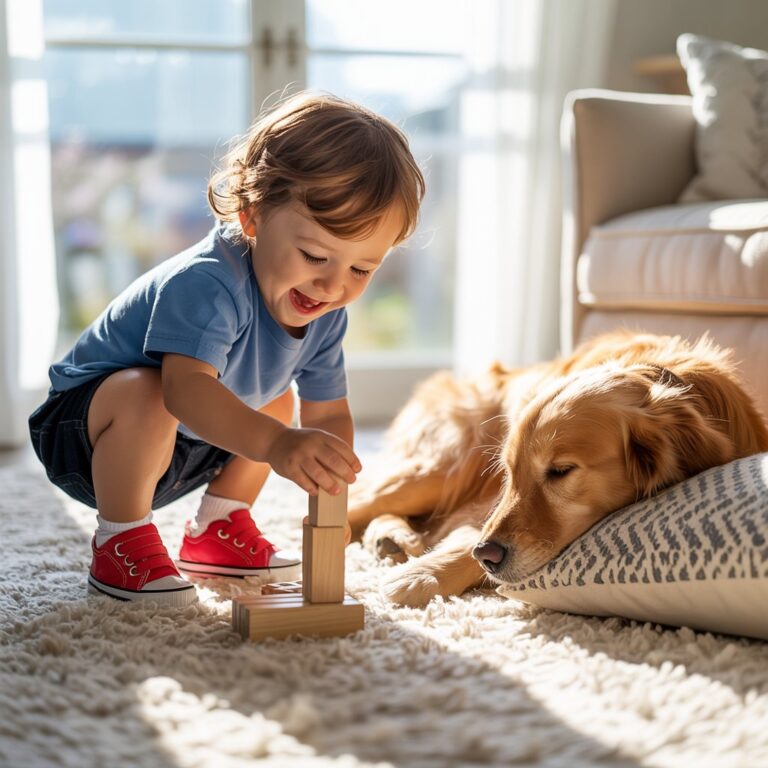A household of three people produces around 2,400 kilograms of waste per year, according to EPA data. That’s about two small cars! Most of this waste ends up in landfills or the ocean. It harms the environment, pollutes our ecosystems and wildlife.
Waste at home is easier to reduce than you think. Start by recycling, composting and cutting down on single-use plastics. These small changes can stop waste from filling up landfills and polluting the oceans. Proper waste management reduces plastic pollution and minimizes the impact on the environment.
We will explore 10 simple ways to reduce waste at home. These solutions are easy to implement and will create a cleaner, healthier planet for future generations.
What Counts as Household Waste (And Why It Matters)
Every home generates household waste but we don’t realize the long-term damage it can cause. Household waste is everything you throw away in daily life, like food scraps, plastics, paper and electronics.
These waste types add up fast and have serious consequences. If not managed properly they pollute our air, soil and water. That means rising cleanup costs, health problems and pressure on our environment.
The impact of household waste depends on what you throw out and how it’s handled. Some items release harmful gases. Others stay in landfills for hundreds of years.
Here are the most common waste types found in homes:
Food Waste: Any leftover or spoiled food that gets thrown out.
- Examples: Moldy bread, expired yogurt, dinner scraps
- Why it matters: Food waste in landfills produces methane, a gas more harmful than carbon dioxide.
Plastic Waste: Single-use plastics and packaging that people throw away after one use.
- Examples: Straws, shopping bags, plastic wrap
- Why it matters: Plastic turns into microplastics that pollute water, soil and harm animals.
Paper Waste: Discarded paper products with no further use.
- Examples: Junk mail, paper towels, broken-down boxes
- Why it matters: Paper waste adds pressure on landfills and wastes trees, water and energy.
Textile Waste: Worn-out or unwanted clothes, fabrics and linens.
- Examples: Torn jeans, old t-shirts, damaged curtains
- Why it matters: Textile waste releases dyes and chemicals that take years to decompose.
Electronic Waste (E-waste): Electronics that are broken or outdated and no longer in use.
- Examples: Old phones, dead batteries, broken chargers
Why it matters: E-waste has metals that seep into soil and water. That’s hard to clean and expensive.
How to Do a Home Waste Audit?
Most people don’t realize what fills up their trash the fastest. A home waste audit gives clear answers. It tracks household trash and reveals which waste habits create the most problems. This is where real changes start.
Begin by collecting every bit of trash for two or three regular days. Don’t skip anything, not even small packaging. Use a bin or box to hold your food waste, plastics, paper, and anything else you usually throw away.
After collecting, take time to sort the trash into clear trash categories like plastic, food, paper, and packaging. Keep each pile separate so it’s easy to spot what shows up most often. That’s the first clue to fixing your waste problem.
Now, look at each group. Count the items or weigh them with a kitchen scale. You can write totals in an audit log or notebook. Some people use home waste tracking apps like Olio, ClearWaste, or Excel to stay organized.
Once you review the totals, check which group produces the most waste. That’s your top waste source. It might be food scraps, wrappers, or extra containers. This part of the waste audit helps you focus your efforts.
Write one or two action ideas for every major category. Focus on small, clear steps that support your sustainability goals. When you understand how to do waste audit steps, better habits become easier to follow every day.
10 Ways to Reduce Waste at Home
Most of our household waste comes from habits we don’t even think about, like plastic bags or leftover food. These habits add up fast and harm the environment before we even notice the damage is being done.
A few small changes can cut waste, reduce your footprint and keep more stuff out of landfills. This section shares ten ways to reduce waste at home without needing new tools or major lifestyle changes.
Each method targets a specific waste problem and fits into your daily routine.
1. Use Reusable Shopping Bags
Plastic shopping bags are one of the most common items found in landfills, streets and waterways. A cloth or canvas bag reduces plastic waste and pollution caused by single use shopping bags. These bags last longer, carry more and don’t rip as easily as standard plastic bags.
You can keep a few reusable bags in your backpack, car or purse for everyday use. Many grocery stores now give discounts or reward points if you bring your own reusable shopping bags instead of plastic.
A reusable bag is a good habit for the environment and makes every shopping trip more sustainable.
2. Start Composting
A home compost system turns food scraps into healthy soil instead of sending more garbage to landfills. Composting reduces trash volume and methane, a bad gas released by rotting organic waste. A healthy compost mix also improves soil quality and supports gardens or potted plants in any home.
You can use a compost bin outdoors or keep a small one near your kitchen sink or counter. Add fruit peels, dry leaves, coffee grounds and vegetable scraps to your mix. Keep dairy, meat and oily leftovers out to avoid pests and bad smells.
Some areas have compost drop-offs or community pickup services for homes without space to compost directly.
3. Buy in Bulk
Bulk shopping reduces plastic wrappers, extra packaging and waste from single-use containers. Large quantities save you money on pantry staples like oats, flour and rice.
Many zero-waste stores have refill stations where you can bring your own containers or reusable cloth bags.
Start with common dry goods your household uses often, like pasta, cereal or dried beans. These store well and make bulk shopping easier to maintain week after week.
Refill shops and co-ops are growing in many cities. They now offer better options each season.
Label jars or storage bags so you don’t get confused once everything is in your pantry.
4. Avoid Single-Use Plastics
Plastic straws, wrappers, bags and cutlery are used once and then tossed into trash that never truly disappears. These throwaway items often pollute oceans, fill landfills and harm wildlife on land and sea.
Reusable options create less waste and offer long-term solutions that protect the environment from lasting damage.
Choose a refillable bottle, a cloth wrap and a metal straw instead of cling film or plastic packaging. Many restaurants and grocery stores now offer plastic-free options for takeout, drinks and basic goods.
Check labels or ask staff before buying items that could be swapped for reusable versions.
Keep a small kit with a fork, napkin and straw in your bag so you’re always ready.
5. Meal Plan to Reduce Food Waste
Most food waste starts when people forget what they already have or buy more than they need. A weekly meal plan helps use up ingredients before they expire and prevents good food from going to waste. A written plan also limits impulse buys and makes cooking easier during school or work days.
Start by checking your fridge and pantry, then write a shopping list based on what you already have. Fill in the rest with fresh items that match the meals you’ve planned for the next few days.
Store leftovers in airtight containers and label them with dates so things stay fresh longer. Turn extra veggies into soup or use leftover rice in a stir-fry to avoid food waste.
6. Reuse and Repurpose
Many household items still have value even when their original purpose no longer applies or fits your needs. You can reduce waste at home by finding new uses for jars, boxes and old clothes.
A second life for items also helps with overconsumption and keeps more trash out of landfills.Jars store snacks, sauces, sewing supplies or hardware. Worn out shirts become rags, bags or patch material. Cardboard boxes are great for drawer dividers, craft kits or home storage.
Use one small shelf or box at home to collect items that can be used again later.
7. Recycle Right
Most recycling programs only work when people follow local rules and don’t put in the wrong stuff. Many people put the wrong things in recycling bins which contaminates and blocks proper reuse.
Clean and sorted materials move faster through facilities and are more likely to be recycled.
Check your local recycling guide to see what’s accepted in your area. Learn what the small triangle symbols on plastic containers mean.
Some plastics look recyclable but aren’t allowed in most curbside programs. Always rinse containers fully to keep your recycling clean and don’t slow down the process.
8. Go Paperless
Paper waste piles up fast through bills, receipts, packaging and disposable paper towels used at home every day. A digital system helps reduce that load and keeps your desk, drawers and counters more organized.
We throw away several paper towels a day without realizing how fast the waste adds up. A reusable paper towel alternative like a microfiber cloth works just as well. They last for weeks, absorb better and can be rinsed or washed between uses. Switching once saves dozens of rolls over time.
Digital options also help with other types of paper clutter. Sign up for paperless billing with your bank, utility or service provider.
Use cloud folders or mobile apps to store receipts and important documents in one place. Cut down junk mail by using opt-out tools from your postal service or mail preference center.
9. Repair Before Replace
Many household items wear out over time but don’t need to be thrown away or replaced right away. A simple repair often restores furniture, electronics, tools or clothing without the cost of buying new.
Minor repairs reduce household waste and ease the pressure on resources used for constant production.
Start with easy fixes like tightening screws, patching clothing or replacing buttons and handles on older items. Repair cafes and online videos have step by step instructions for most repairs using simple tools at home. Many fixes take just minutes and keep useful items out of the trash.
Keep a small toolkit with glue, thread and screwdrivers for common home repairs.
10. Donate or Swap
Many things we throw away still have value and could help someone in your local area. A donated item like clothing, books or cookware avoids landfill waste and helps someone who may need it. Swap groups make it easy to share items you no longer use and save money and reduce waste.Check local shelters, charities or thrift stores that accept used items in good condition. Online groups like Freecycle or Buy Nothing connect people in your area who want to give or trade useful items. These platforms foster a sharing culture and keep household items moving not stored.
Put a reminder on your calendar each month to sort through what you no longer use or need at home.
Advanced Waste Reduction Strategies
Most waste reduction guides stop at reusable bags and basic recycling. But waste keeps building when systems stay broken. Advanced waste tips go beyond habits. They help reduce waste at scale by using tools, community resources and smarter home design.
Digital Tools That Build Smarter Habits
You can reduce waste at scale when you track food, plan meals and store items the right way.
- Too Good To Go lets you rescue unsold food from stores before it’s thrown out.
- NoWaste tracks what’s in your fridge and reminds you before food hits its expiration date.
- A habit tracker app logs how often you use leftovers or avoid single-use items.
- Expiration alerts help you spot what’s going bad before it becomes waste.
Community Systems That Reduce Excess
Local systems lower waste by cutting the need to own everything or overbuy for rare situations.
- A swap group helps people trade items they no longer need with others nearby.
- Community fridges let neighbors share food that’s still good instead of throwing it away.
- Tool libraries lend items like drills, ladders or sewing machines that you rarely use.
Household Systems That Automate Better Decisions
Zero-waste homes use small systems that guide behavior without needing constant reminders.
- Bin labeling helps everyone sort trash, compost and recycling without second-guessing.
- Waste stations under the sink or near the pantry make sorting easy and consistent.
- Expiration trackers near food shelves prevent forgotten items from turning into garbage.
Overcoming Barriers to Reducing Waste
Most people want to waste less but daily life gets in the way. Schedules stay full, budgets feel tight and family habits don’t always support change. These challenges pile up and make even small steps feel hard to manage.
Motivation fades when solutions take too much time or feel like extra work. That doesn’t mean people don’t care. It means the systems they use aren’t designed for success yet. Waste reduction only sticks when changes match your routine and make life easier not harder.
Here’s how to overcome waste reduction barriers that most people face:
- Set up one sorting station with labels to cut confusion and make decisions faster.
- Plan meals once a week to save money, reduce waste and prevent rushed food choices.
- Use tools like Too Good To Go or NoWaste to track food and spot what’s expiring soon.● Pack reusable items ahead to avoid buying disposables on busy days.
- Join a swap group to trade instead of buying new items you rarely use.
- Focus on one habit at a time until it becomes automatic.
Keep a visual record. Seeing progress motivates.
FAQs
Even with tips and tricks, readers have questions about how zero-waste works in real life. These answers fill in the gaps and support long-term progress.
What are the easiest zero-waste swaps for beginners?
Start with what you use daily. A reusable water bottle, cloth bags and a metal straw are good. These are affordable, easy to remember and make a difference with minimal effort.
Is a zero-waste lifestyle expensive?
Living with less waste saves you money. Reusable products cost more upfront but last longer. You buy less over time which makes most zero-waste habits budget friendly and practical for any home.
How do I store leftovers without plastic?
Use glass jars, stainless containers or silicone bags with tight seals. Label them with the date and store in the fridge. These options reduce plastic waste and keep food fresh for longer.
Can kids be part of zero-waste routines?
Yes. Kids can help with recycling, use refillable bottles and turn off unused lights. These small habits build eco awareness early. It also helps families create routines to reduce waste together every day.
How do I track my progress over time?
Use a printable audit template or a habit tracker app to log your actions weekly. Count the waste you avoided and the swaps you made. Tracking progress builds motivation and shows which habits are working for you.
Conclusion
Every small change adds up when you’re consistent and pay attention to your daily waste habits. You don’t need big changes or expensive tools to see real progress. What matters most is choosing steps that fit your routine and make sense for your life.
Waste reduction works best when it feels normal not forced or overwhelming. Pick one small action and make it part of your day. Print a waste tracker, label your bins or plan a low-waste meal. These choices reduce waste at home and keep your habits clear, useful and easy to maintain.




